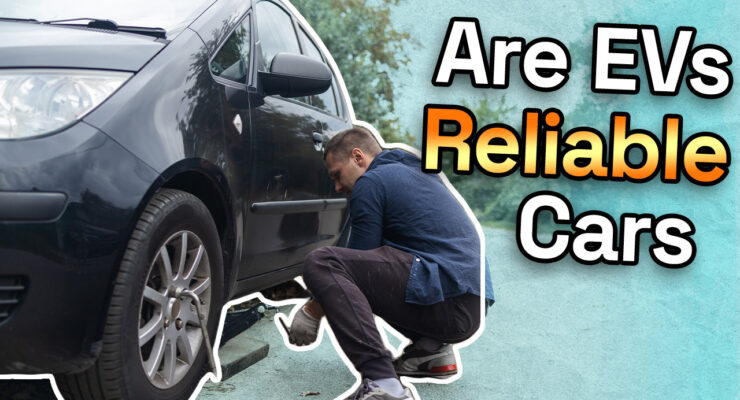
Fast read
Electric vehicles (EVs) have fewer parts than traditional internal combustion engine vehicles, which means they have fewer potential points of failure and may be less likely to break down. However, the frequency of breakdowns for an individual EV still depends on the owner's driving behaviour and how well the EV is maintained.
Insurance premiums for EVs may be higher because of unknown long-term factors for insurance companies to consider, as well as the relative lack of second-hand EV parts available for repair.
EV batteries can last for several years but will eventually need to be replaced, which can be expensive. Ultimately, the likelihood of an EV breaking down depends on various factors, including the quality of the EV and how it is used and maintained.
Do electric cars break down as much as petrol cars?
As with all electric appliances, electric cars can break down.
One advantage of electric cars over cars with traditional combustion engines is that the EV’s engine is a fully sealed unit without maintenance. Additionally, the manufacturer claims that they have designed them to last many hundred thousand km.
EVs don’t have traditional car parts such as clutch, radiator, exhaust system, oil sumps, oil filters, and starter motors. Fewer parts mean less wear and tear and less maintenance costs. Electric vehicles never break down because of the failure of any of these parts.
Electric cars, powered by lithium-ion batteries, generally experience less wear than hybrid or petrol-powered vehicles, despite the new fail point they introduce. Regenerative braking powers electric cars’ brake pads, making them less susceptible to wear and tear.
So because of the lower number of fail points, one could extrapolate that EVs are less likely to break down than conventional vehicles. The number of times an EV breaks down still relies on how the EV owner drives and takes care of it.
One of the significant advantages of an electric car is the ease of service. For example, Tesla can perform software updates and checks remotely without visiting a service centre.

Current premiums involved with electric cars
Even though many electric vehicles have higher insurance premiums, it does not necessarily mean they are more likely to break down. Many unknown long-term factors for insurance companies still need to be considered, so these risks have been added to the insurance premium, which is likely to come down in years.
EV premiums are high because there aren’t many wrecking yards selling used EV parts since EVs are still new. EV repairs are expensive for this reason; as usual, the manufacturer must source all parts. However, we expect this cost to improve over time.
Is the profit made in the parts?
One slightly cynical perspective of any product manufacturer has been that similar to printers, which are cheap to purchase but expensive in the printer cartridge; the real profits are earned in the consumables and the parts.
One can argue that petrol car manufacturers have been developing a similar method to boost earnings, whereby the initial car is relatively affordable. Still, someone artificially inflates the costs of spare parts.
EVs have fewer moving parts. Therefore, the markup on spare parts for EVs must be higher than that for petrol cars. This is done to ensure consistent profit for EV makers.
Electric vehicles (EVs) can experience various issues. Some common problems include flat tyres, electronic malfunctions, broken air conditioning, software issues, and broken systems. Additionally, EVs may encounter wiper motor problems, lights not working, broken windows, suspension failures, and leakages.
Finally, users can make current EV batteries last longer than ten years, depending on how they use them. Even after a while, the battery can still keep 55-80% of its original power. It may last even longer depending on how far the driver needs to go. Nevertheless, eventually, someone will need to change it over at a decent expense.
A key consideration in purchasing a second-hand EV is expected to be the state of the battery and the number of charge cycles it has endured.
Overview of electric vehicles
In summary, because of the fewer parts, EVs likely have a lower % of breakdowns than petrol vehicles. This means that EVs are also safer than conventional petrol and diesel vehicles.
I would expect that for every car that stopped and ran out of petrol, we will find an EV vehicle that ran out of charge. But, unfortunately, there are not many ways to prevent a forgetful and determined idiot.